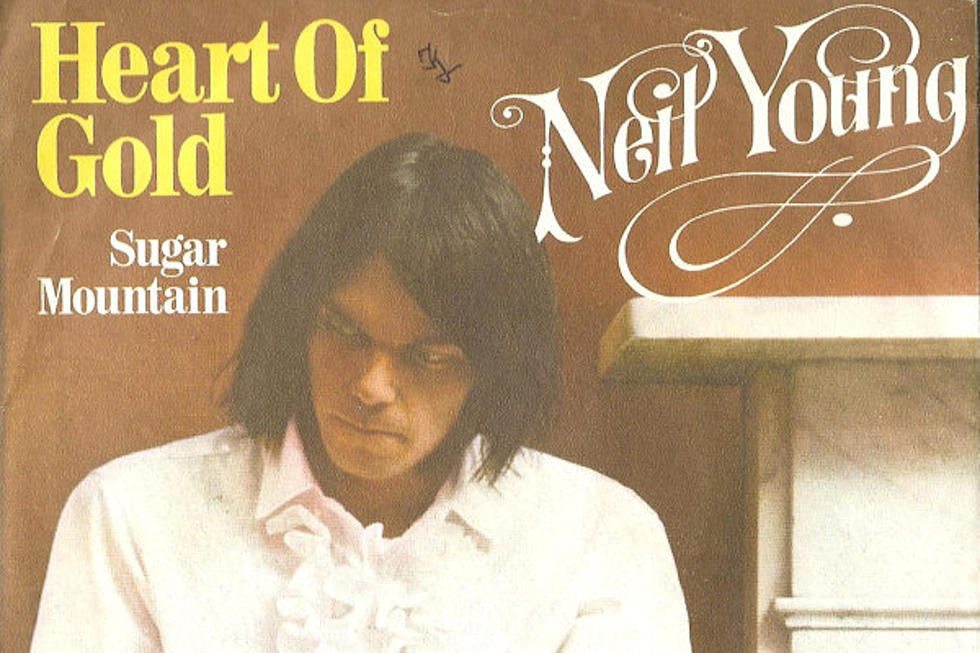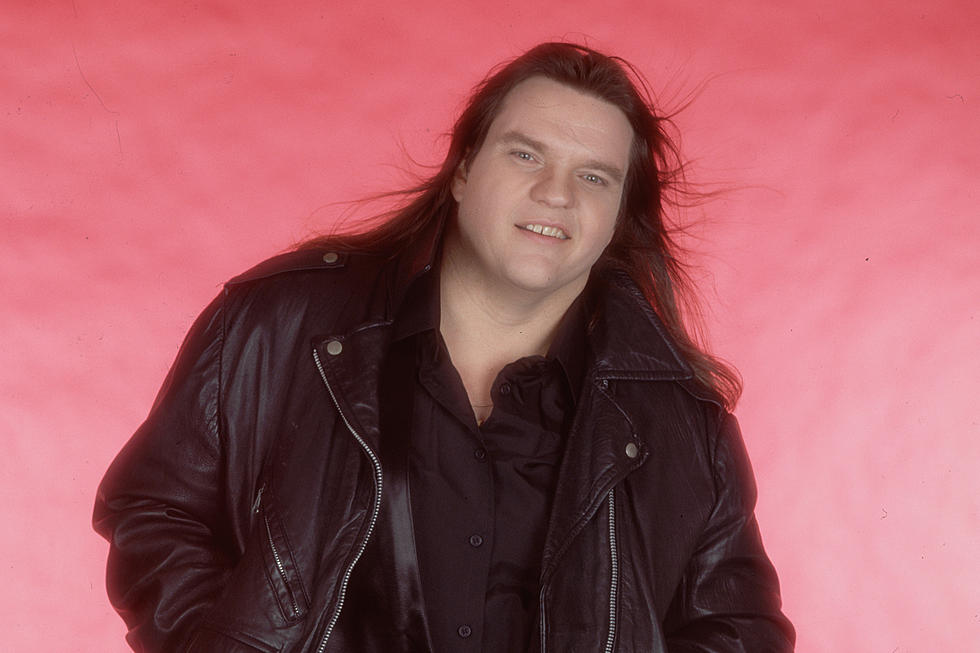
The Neil Young Hit That Bothered Bob Dylan
Neil Young's "Heart of Gold" was initially just a short interlude nestled within a different song, "A Man Needs a Maid," before it became a triumphant stand-alone hit.
"That's the way it originally came out," Young told Guitar World in 2009. "It was just a little piano thing in the middle of a larger song. It just morphed. It just grew."
Inspiration for the single, released in January 1972, had arrived in the form of a wordless tune. "I stole the idea for 'Heart of Gold' from 'Love Is Real,'" Young later admitted to Dutch journalist Constant Meijers in 1974. The instrumental track by French orchestra leader Paul Mauriat had been a No. 1 hit on the U.S. easy listening chart in 1968.
As the decade turned, a lingering back injury led Young to focus more attention on his acoustic guitar, which was easier to play sitting down than an electric. He penned "Heart of Gold," and invited James Taylor to play banjo on the recording, and Linda Ronstadt to sing backing vocals.
"Neil Young has those classic elements of sturdy song construction, but still gives you something new and unique," Ronstadt said in Shakey: Neil Young's Biography. "There's just some completely classic support structures in his chord progressions — they often seem to run off the key of D — that are just so sturdy and so right, like Greek architecture. The strength of the classic traditional stuff, even though they're completely unique, they're all completely Neil."
"Heart of Gold" rose swiftly to the top of the charts, becoming Young's only No. 1 U.S. single. One of his primary influences, however, did not think the track sounded "completely Neil." Bob Dylan, in between albums at the time and living in Phoenix, could not shake the feeling that the song sounded like something he himself would write.
"I used to hate it when it came on the radio," Dylan told Spin in 1985. "I always liked Neil Young, but it bothered me every time I listened to 'Heart of Gold.' I think it was up at No. 1 for a long time, and I'd say, 'Shit, that's me. If it sounds like me, it should as well be me.' ... It seemed to me somebody else had taken my thing and had run away with it, you know, and I never got over it."
Listen to Neil Young Perform 'Heart of Gold'
This chart success helped make Young's fourth studio LP Harvest the best-selling album of 1972, and Young one of the most recognizable names in early '70s rock. It also took a significant emotional toll. Young's back injury only got worse as he continued to tour, resulting in a slipped disk, an operation and strict orders from a doctor to spend no more than four hours a day on his feet.
"I tried to stay away from the success as much as possible," Young told Rolling Stone's Cameron Crowe in 1979. "And being laid up in bed gave me a lot of time to think about what had happened. I thought the popularity was good, but I also knew that something else was dying."
Like Dylan after his infamous motorcycle accident, Young "became really reclusive." He spent several months at home, partially nursing his ailing back, but also avoiding the limelight. Young eventually launched a three-month tour in the fall of 1972, every night of which was recorded and eventually released as Time Fades Away. But the trek was miserable: Financial discrepancies developed between Young and his backing band, his drinking habits ramped up and fans hoping to hear knockout hits like "Heart of Gold" were disappointed in the lackluster versions offered.
"I guess at that point I'd attained a lot of fame and everything that you dream about when you're a teenager," Young told Melody Maker in 1985. "I was still only 23 or 24, and I realized I had a long way to go – and this wasn't going to be the most satisfying thing, just sittin' around basking in the glory of having a hit record. It's really a very shallow experience; it's actually a very empty experience. It's nothing concrete except ego-gratification, which is an extremely unnerving kind of feeling. So I think subconsciously I set out to destroy that and rip it down, before it surrounded me."
When the tour was over, Young returned home, downtrodden. His long-awaited next album, 1974's On the Beach, became the second installment in what would later be dubbed his "ditch trilogy" for their gloomy, dejected attitudes. For Young, "Heart of Gold" remained the crux of his evolution from Dylan-esque folkie to seasoned, if sometimes cynical, songwriter.
"[That] song put me in the middle of the road," he wrote in the liner notes to his 1977 compilation album, Decade. "Traveling there soon became a bore so I headed for the ditch. A rougher ride but I saw more interesting people there."
Neil Young Albums Ranked
The Best Crosby Stills Nash and Young Fight Stories
More From 100.7 KOOL FM










